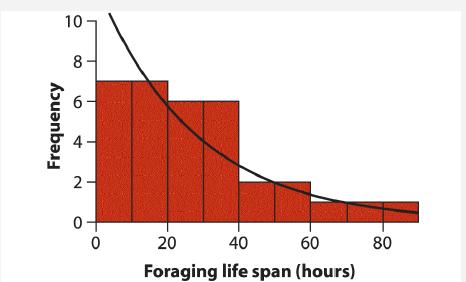Life spans of individuals in a population often approximate an exponential distribution, a continuous probability distribution having
Question:
Life spans of individuals in a population often approximate an exponential distribution, a continuous probability distribution having probability density f(Y)=λe−λY, where λ is the mortality rate. To estimate the mortality rate of foraging honey bees, Visscher and Dukas (1997) recorded the entire foraging life span of 33 individual worker bees in a local bee population in a natural setting. The 33 life spans (in hours) are listed as follows and in a histogram.


If life span follows an exponential distribution, then the log-likelihood of λ, given the data, is ln L[ λ | observed life spans ]=n ln(λ)−λΣiYi, where Yi is the life span of individual i, and n is the sample size.
a. Estimate λ, the mortality rate of bees per hour. Using a computer, find the maximum likelihood estimate of λ to two decimal places.
b. What is the value of the log-likelihood at the maximum likelihood estimate λ^?
c. What is the likelihood-based 95% confidence interval for λ?
Step by Step Answer:

The Analysis Of Biological Data
ISBN: 9781319226237
3rd Edition
Authors: Michael C. Whitlock, Dolph Schluter





